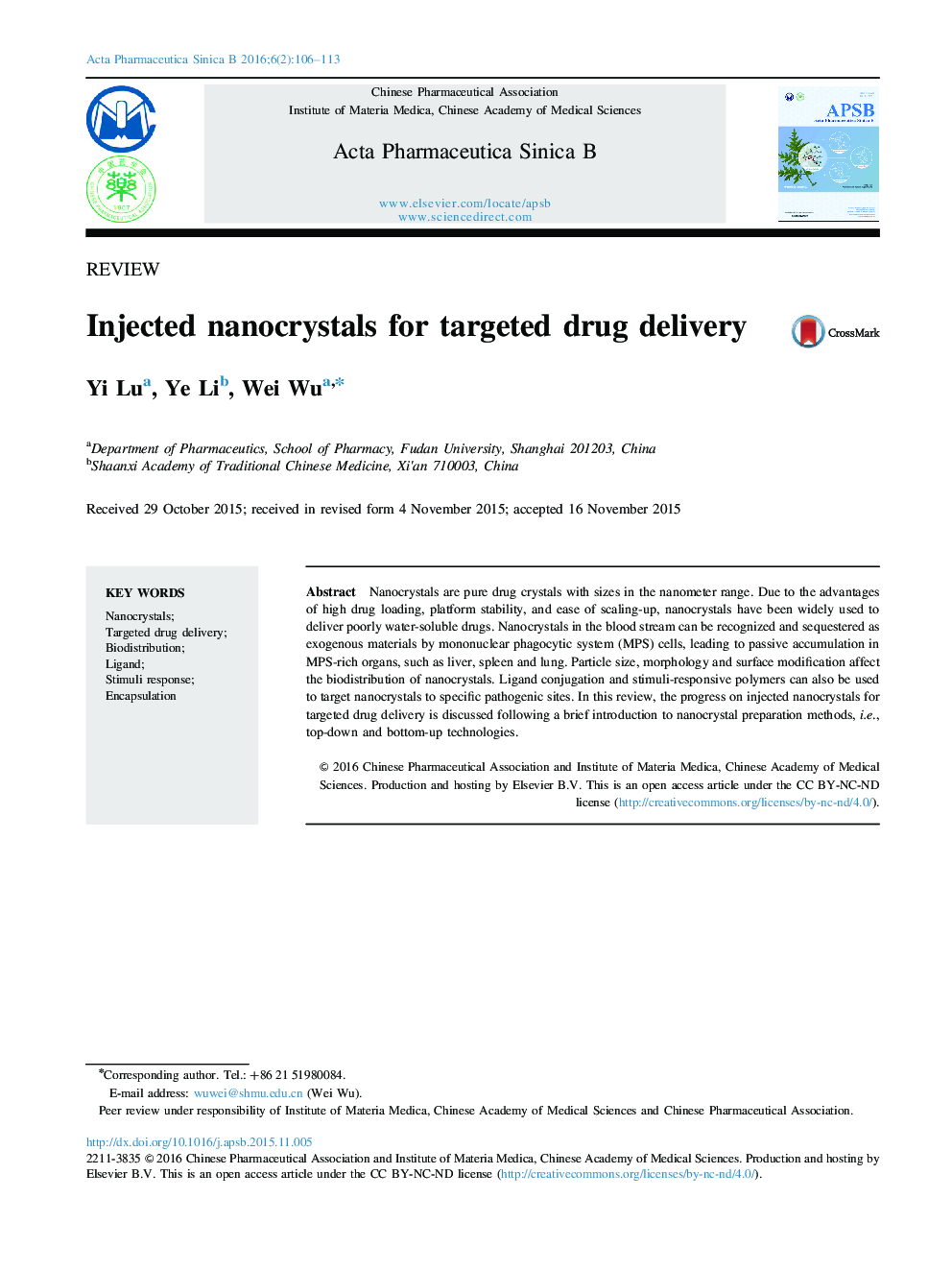| Article ID | Journal | Published Year | Pages | File Type |
|---|---|---|---|---|
| 2474453 | Acta Pharmaceutica Sinica B | 2016 | 8 Pages |
Nanocrystals are pure drug crystals with sizes in the nanometer range. Due to the advantages of high drug loading, platform stability, and ease of scaling-up, nanocrystals have been widely used to deliver poorly water-soluble drugs. Nanocrystals in the blood stream can be recognized and sequestered as exogenous materials by mononuclear phagocytic system (MPS) cells, leading to passive accumulation in MPS-rich organs, such as liver, spleen and lung. Particle size, morphology and surface modification affect the biodistribution of nanocrystals. Ligand conjugation and stimuli-responsive polymers can also be used to target nanocrystals to specific pathogenic sites. In this review, the progress on injected nanocrystals for targeted drug delivery is discussed following a brief introduction to nanocrystal preparation methods, i.e., top-down and bottom-up technologies.
Graphical abstractNanocrystals can be prepared by either top-down or bottom-up technologies. Injected nanocrystals can be passively accumulated in liver, spleen and lung due to sequestering and transportation by mononuclear phagocytic system cells. Ligand conjugation and stimuli-responsive polymer can be used to target nanocrystals to specific pathogenic sites.Figure optionsDownload full-size imageDownload as PowerPoint slide
